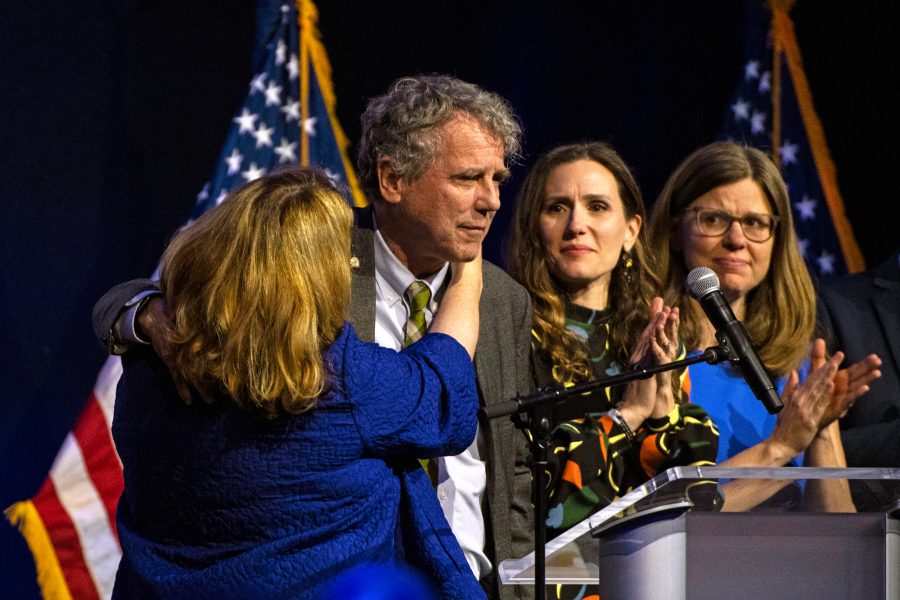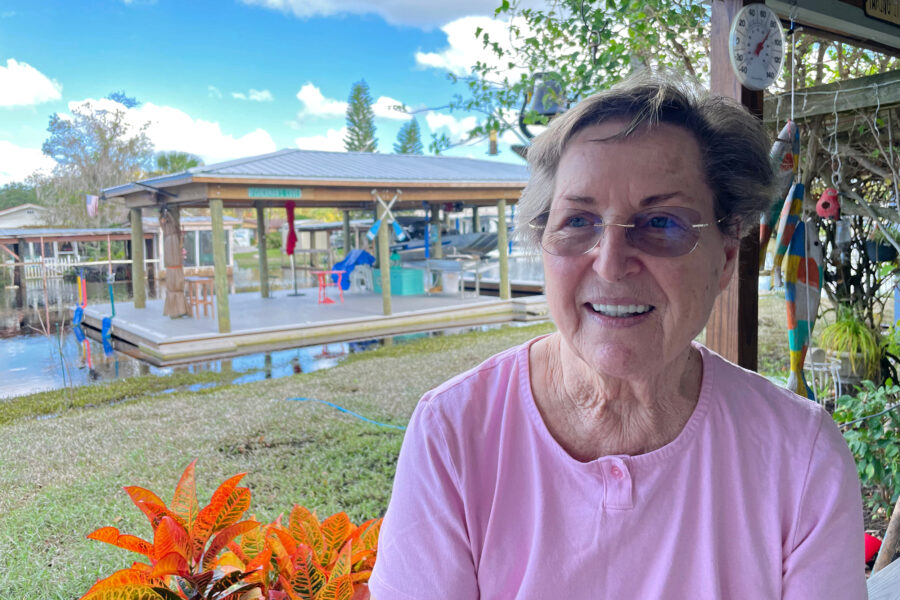VP Candidate Tim Walz Has Deep Connections to Agriculture and Conservation
Soon after Vice President Kamala Harris selected Tim Walz as her running mate this week, pictures of the Minnesota governor began to spread across social media—of Walz holding a piglet, of Walz on thrill rides at the state fair, of Walz and his rescue dog.
All of it coalesces into an image of a guy with rural roots and deep ties to agriculture.
Since Harris’ announcement, climate advocates have applauded her pick, pointing to Walz’s solid climate bona fides. Farm groups across the political spectrum, including those that work to shrink agriculture’s carbon footprint, have, too.
During his six terms in Congress, Walz was a member of the House Committee on Agriculture, where he was instrumental in ensuring that soil conservation measures made it into the 2018 farm bill. At the time, the farm bill—the massive piece of legislation that guides the country’s nutrition and farm policy—failed to acknowledge agriculture’s role in contributing to climate change, and barely hinted at its potential role in slowing it.
Explore the latest news about what’s at stake for the climate during this election season.
Walz, who spent his early years working on his family’s farm in rural Nebraska, found a political work-around of sorts. That year he introduced the Strengthening Our Investment in Land (SOIL) Stewardship Act, which boosted existing farm conservation programs and incentivized farms to adopt certain practices that improve soil health, ultimately making soils better able to sequester carbon.
“Even as short a time ago as 2018, the word ‘climate’ does not appear in the farm bill,” said Ferd Hoefner, who was policy director at the National Sustainable Agriculture Coalition at the time. “He made soil health, through the SOIL Act, the acceptable thing one could talk about when one was trying to talk about climate mitigation through agriculture.”
Hoefner noted that the last time the term climate change appeared in a farm bill was in 1990, an indication of just how polarized and partisan the issue has become in farm policy debates since then. After that, it “was verboten to even mention the word,” he added.
The provisions of the SOIL Stewardship Act were ultimately included in that year’s farm bill. Farm policy observers also point to one of Walz’s biggest farm-related accomplishments, which was introducing bills in 2014 and 2018 that help small-scale, veteran and beginning farmers access credit and funds for land, equipment and crop insurance. Provisions of these bills made it into the final versions of those years’ farm bills.
The Land Stewardship Council, based in Minnesota, has long pushed against the trend of increasing consolidation in agriculture, which has seen the rise of ever-larger farms, mostly run by large corporate entities. This week the council applauded Walz’s record of working against this ongoing shift.
“What we’ve seen through his time in Congress and his time in the governor’s office is that issues around the future of agriculture and rural communities aren’t partisan—they cut across political lines,” said Sean Carroll, policy director at Land Stewardship Action, the council’s political arm. “Many bills he’s co-sponsored or led are about creating a future for rural communities where we can keep more farmers on the land, where we can allow farmers who are stewarding the land to succeed and make money.”
Consolidation, Carroll noted, has exacerbated a system of farming that has become a major source of greenhouse gas emissions. Large livestock facilities generate more liquid manure, which emits methane, a short-lived but potent greenhouse gas. The crops grown to feed those livestock, mostly corn and soybeans, are especially fertilizer intensive. Agricultural land use, including fertilizer use, is the largest source of nitrous oxide, a greenhouse gas even more potent than methane. (While carbon dioxide is the most abundant greenhouse gas, methane is 80 times more powerful at trapping heat in the atmosphere, and nitrous oxide is 265 times more powerful.)
“The consolidation is what’s causing the climate problems from agriculture,” Carroll said.
“Many bills he’s co-sponsored or led are about creating a future for rural communities where we can keep more farmers on the land…”
Walz has had to balance the economic interests of his farm-heavy state with the climate and environmental issues caused by the agriculture industry, which generates about $26 billion for the state annually. Much of that money comes from emissions-intensive forms of agriculture, including concentrated animal feeding operations that, in Minnesota, primarily raise hogs, or row crop farms that grow corn for ethanol. Minnesota is home to 19 ethanol refineries.
“Gov. Walz is the perfect choice to serve as Vice President Harris’ running mate,” said Geoff Cooper, CEO of the Renewable Fuels Association. “He brings Midwestern pragmatism and sensibilities to the ticket and would ensure rural America’s ‘flyover country’ has a strong voice in a potential Harris administration. Dating back to his days in Congress, Gov. Walz has always been a passionate and effective advocate for renewable fuels and agriculture. He has a deep understanding of the challenges and opportunities facing the ethanol industry.”
Ethanol is facing increased criticism from environmental groups that challenge the purported climate benefits of corn-based fuel. Some research says ethanol’s carbon footprint is greater than that of gasoline.
But in corn-producing states like Minnesota, questioning ethanol spells political death, and Walz has had to tread a bipartisan path. In 2020, Walz, along with three Midwestern Republican governors, appealed to the Trump administration to reject the oil industry’s attempts to exempt small refineries from being required to blend biofuels into their mixes. (One of those Republicans, Kristi Noem of South Dakota, said Walz was “no leader” and called him a “radical” on social media Tuesday.)
“On biofuels he’s indistinguishable from all the other Republicans and Democrats in Midwestern states,” Hoefner said, “which is bowing at the altar of almighty corn.”
About This Story
Perhaps you noticed: This story, like all the news we publish, is free to read. That’s because Inside Climate News is a 501c3 nonprofit organization. We do not charge a subscription fee, lock our news behind a paywall, or clutter our website with ads. We make our news on climate and the environment freely available to you and anyone who wants it.
That’s not all. We also share our news for free with scores of other media organizations around the country. Many of them can’t afford to do environmental journalism of their own. We’ve built bureaus from coast to coast to report local stories, collaborate with local newsrooms and co-publish articles so that this vital work is shared as widely as possible.
Two of us launched ICN in 2007. Six years later we earned a Pulitzer Prize for National Reporting, and now we run the oldest and largest dedicated climate newsroom in the nation. We tell the story in all its complexity. We hold polluters accountable. We expose environmental injustice. We debunk misinformation. We scrutinize solutions and inspire action.
Donations from readers like you fund every aspect of what we do. If you don’t already, will you support our ongoing work, our reporting on the biggest crisis facing our planet, and help us reach even more readers in more places?
Please take a moment to make a tax-deductible donation. Every one of them makes a difference.
Thank you,
David Sassoon
Founder and Publisher
Vernon Loeb
Executive Editor
Share this article
Disclaimer: The copyright of this article belongs to the original author. Reposting this article is solely for the purpose of information dissemination and does not constitute any investment advice. If there is any infringement, please contact us immediately. We will make corrections or deletions as necessary. Thank you.








